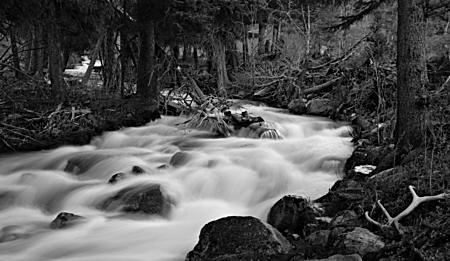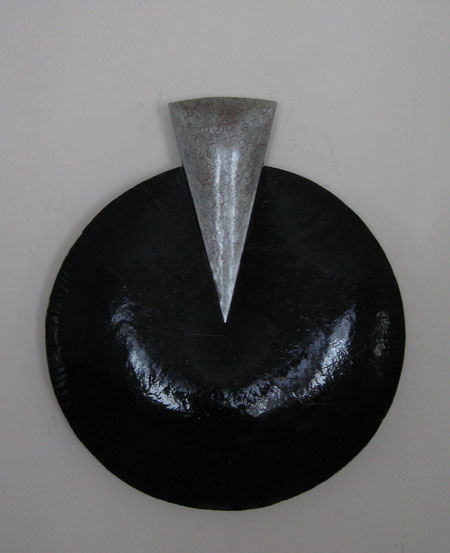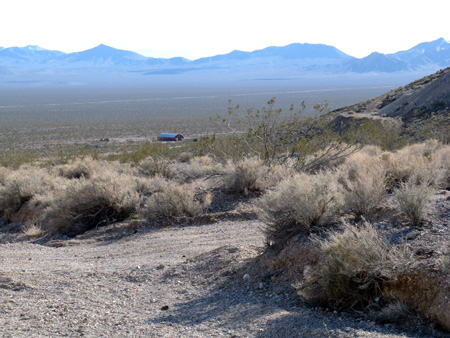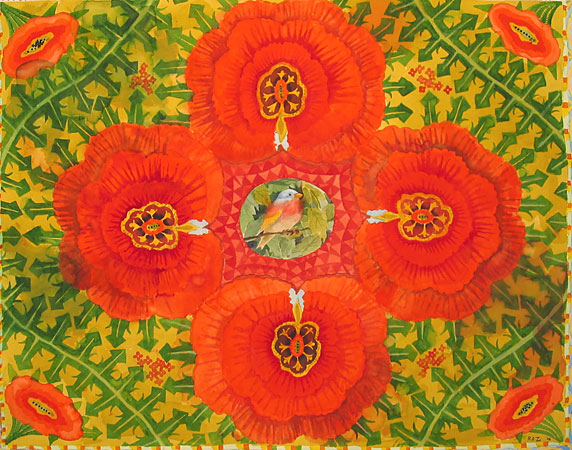Archives for February, 2009
Art and Tango


I’ve always liked this photo by Steve Durbin.
But what does it have to do with tango?
Let’s look more closely. The landscape has sharp and repetitive features. This regularity creates a structure through visual rhythm. The water is something quite different. It is a smooth flow, it is bold and bright, yet soft. Both the land and the water have motion. You might say, the water is moving and the land is still, but that is not correct. more… »
Always Wondered
So much of my production starts with a simple mundane geometric proposition: scissor jack shapes, chain links or objects mounted on a common spindle. The proposition in this instance is the pie chart.
I had created informational pie charts during my institutional existence and had liked their sense of completion. More recently I tried merging the pie chart with some experiments in plaster. I made a few examples with the anticipation of doing more. I have since moved away from plaster for its weight and fragility, but the chart theme has stayed with me. Ubiquitous as it is, I have often wondered why I haven’t seen the form elsewhere in an art context.
And then there it was, lurking on a far wall in an Art In America photo, part of an article on a show at the Blanton Museum of Art concerning the Park Place Group. Neither the artist nor the multicolored piece is identified. I had to crop and Photoshop to make the pie chart, situated behind a di Suvero sculpture, stand out a little.
Some unidentified person had actually done a pie chart – and way back in the sixties. I am contacting the museum for whatever specifics they can provide.
Meanwhile, for the sake of this post, I dug out an pie chartish example that had survived last year’s plaster purge. By way of explanation, this object was formed by pouring plaster onto a plastic sheet, stretched over a plywood cutout of the desired shape. This was then sealed with gloss polyurethane varnish.
The question, then, might be: do you seek out work by others that is similar to your own? Do you do this in a spirit of anticipation or trepidation?
Poll: Are artists interested in science?

Maya Lin from Systematic Landscapes (photo: arcspace)
I recently came across an amazing argument for increased arts funding, especially in this economic crisis. Actually, the thrust of the argument—one I believe in—is not so amazing, though it may often be neglected. But some of the numbers cited in support truly are. The claim, by Michele and Robert Root-Bernstein, is that arts education is an important factor in developing creativity and innovation, traits that seem more essential than ever at a time when the status quo has broken down. The examples leading off their article are interesting, but not in themselves compelling to me. The astounding part (which also struck the Artful Manager, where I first learned of this) is the following: more… »
The Goldwell Open Air Museum, at the Red Barn, Beatty, Nye County, Nevada
I am in Beatty Nevada, doing an artist’s Workspace Residency at the Goldwell Open Air Museum.
It is currently day 4 of the residency and, frankly, I’m still trying to sort myself — and my environs — out.
Our residential quarters are quite wonderful — a little strange, but all mod cons including high speed internet.
The studio space is 4 miles away, at the Red Barn, donated to the Goldwell Foundation by the Barrick Gold mining company who mined the Barrick Bullfrog Mine, which has stripped the mountain to the east, creating a south-facing pyramidal mountain that I still haven’t gotten my camera around.
Here’s the Red Barn:
The photo was taken from Rhyolite, a ghost town within walking distance to the north of the Red Barn. The setting, as you see, strikes a bit of awe, maybe even fear, into the plein air artist.
A Las Barricadas
…..night after night critics and collectors scarf down meals paid for by dealers promoting artists, or museums promoting shows, with everyone together at the table, schmoozing, stroking, prodding, weighing the vibes. And where is art in all of this? Proliferating but languishing….
…., artists can also take over the factory, make the art industry their own. Collectively and individually they can customize the machinery, alter the modes of distribution, adjust the rate of production to allow for organic growth, for shifts in purpose and direction. They can daydream and concentrate. They can make nothing for a while, or make something and make it wrong, and fail in peace, and start again….
Paragraphs excerpted from
The Boom Is Over. Long Live the Art! By HOLLAND COTTER
Pattern and Decoration, a reprise
“Pattern and Decoration” (P&D) is the name of an art movement that had its moment of visibility in the post-modern pluralism of the 1970’s and 1980’s. Its practitioners include Valerie Jaudon, Miriam Schapiro, Joyce Kozloff, Kim MacConnel, Tony Robbin, Robert Kushner, Robert Zakanitch, and many others. P&D often serves as an unheralded theoretical base for the quilted arts that I am familiar with.
Robert Zakanitch, Red Watercolor, 34 x 36, 2007
Pattern and Decoration: An Ideal Vision in American Art, 1975 –1985 is the printed catalogue of an exhibit held at the Hudson River Museum in 2007 -2008. The catalogue has excellent essays by Anne Swartz, Arthur Danto, Temma Balducci, and John Perreault, as well as including short biographies of the artists and plates of the exhibited art. Most of the words which follow come from the catalogue.





